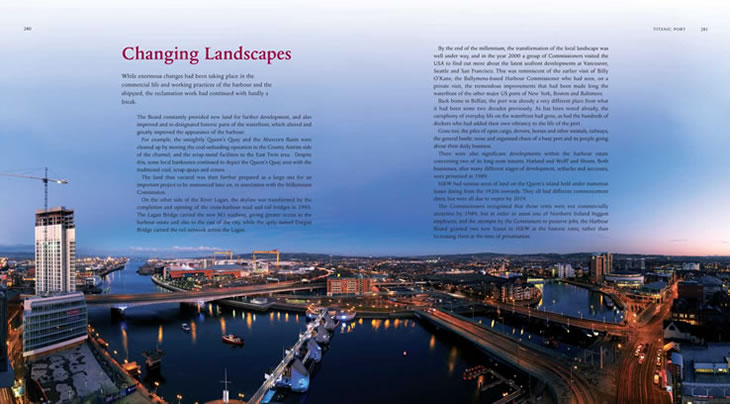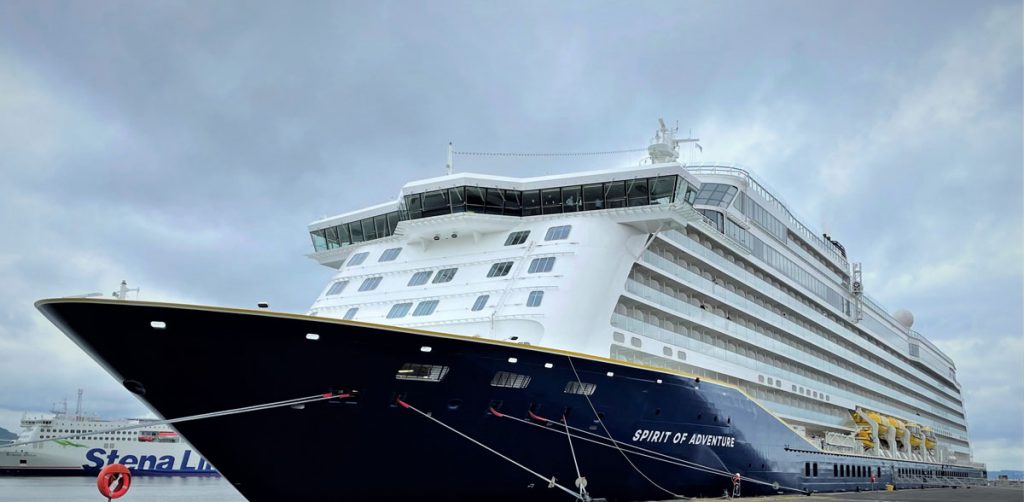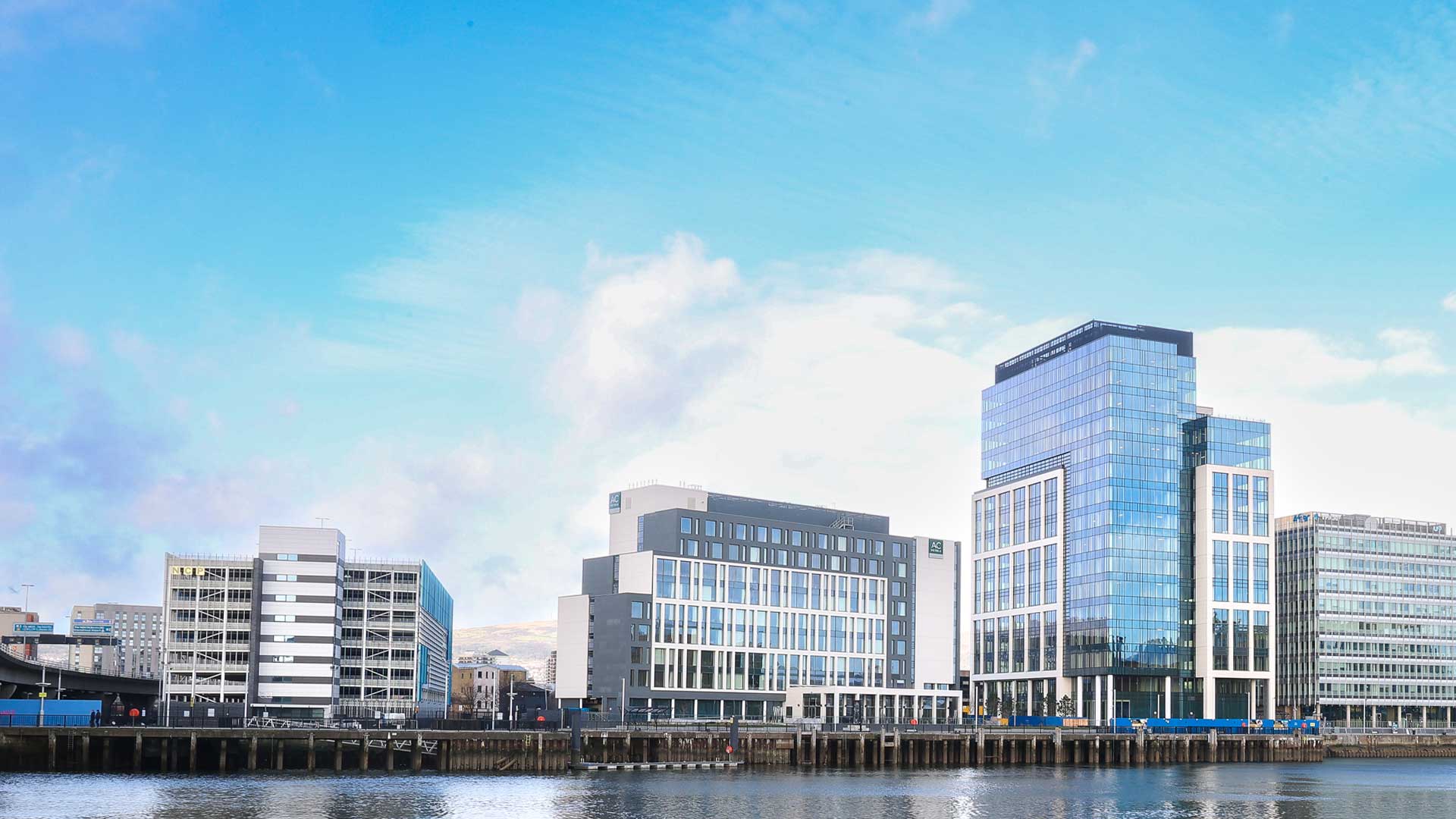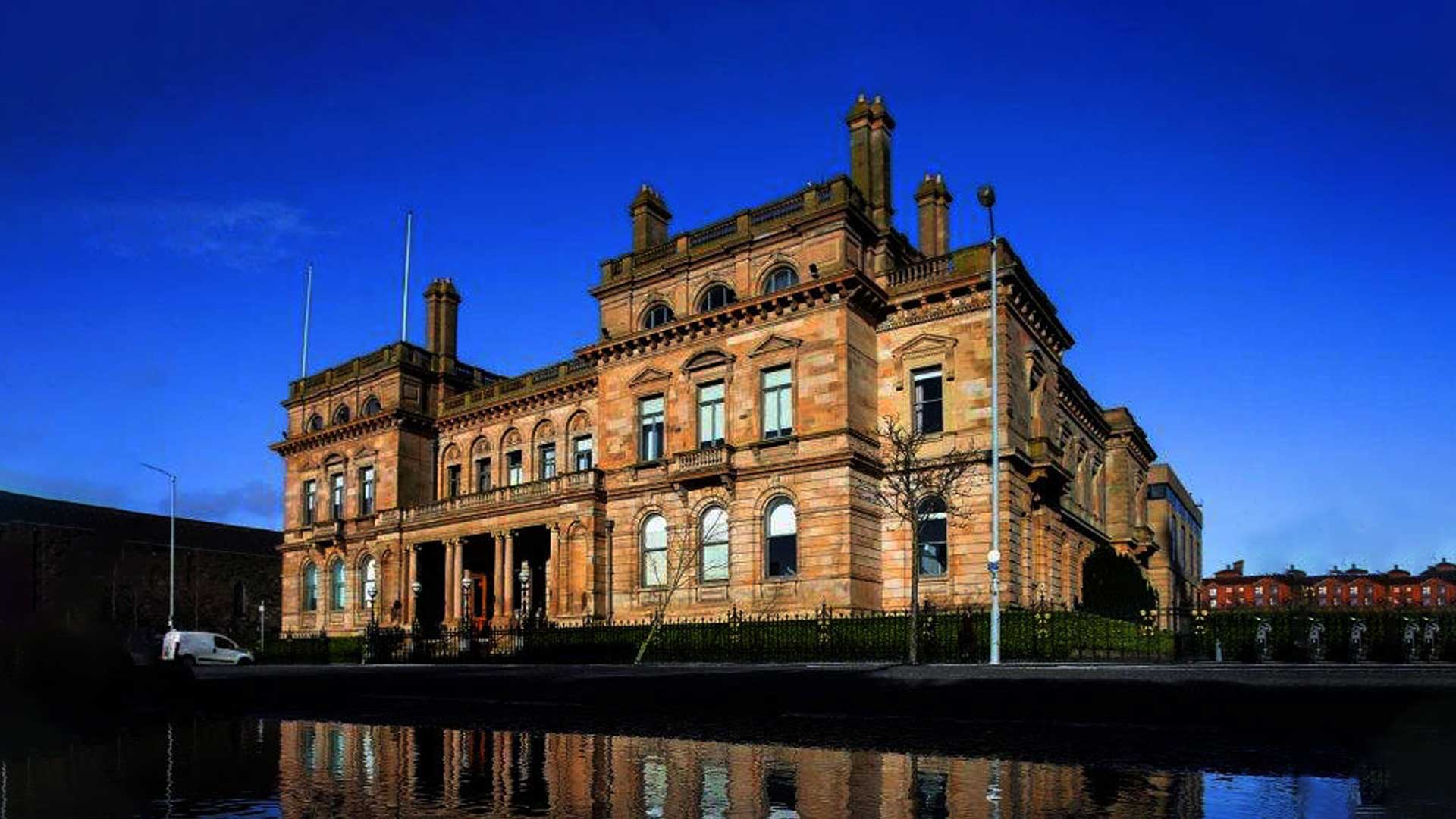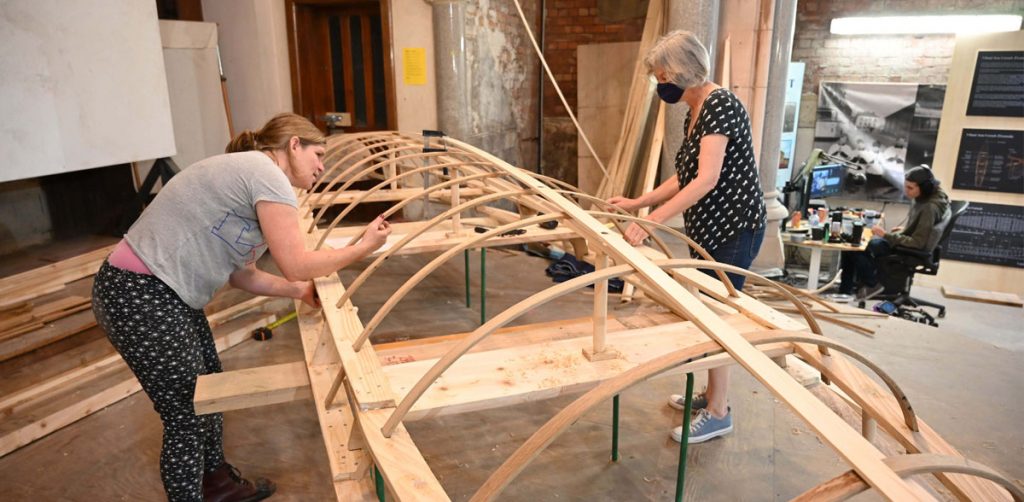HISTORY
the history of belfast harbour
The origins of Belfast Harbour can be traced back to 1613, when, during the reign of James I, Belfast (not yet a City at this time) was incorporated as a borough by royal charter, with provision for the establishment of a wharf or quay.
As a result a quay was constructed at the confluence of the Farset and Lagan rivers in the early 1600s. However, it was still significantly smaller than that of Carrickfergus, which was a bigger and more established port at the time.
But over the next century the Port continued to expand. Records show that by 1663 there were 29 vessels owned in the town with a total tonnage of 1,100 tonnes. Trade continued to grow throughout the century, and it became clear that effective governance was required.
Following an act of the Irish Parliament in 1785, a new body – the Corporation for Preserving and Improving the Port of Belfast – was constituted.
Better known as the Ballast Board, its primary objective was to develop solutions to restrictions caused by shallow water, bends in the channel approach and inadequate quays.
Work on straightening the river and constructing what would become known as the Victoria Channel began in 1839.
These problems, together with an increasing volume of trade, led to a new government act of 1837.
In 1847 the Belfast Harbour Act repealed previous acts and led to the formation of the Belfast Harbour Commissioners – a 17-strong body with much wider powers which began overseeing a process of finishing the first channel, creating others, reclaiming land to accommodate new quays, encouraging fresh business and embracing new shipping and cargo-handling technology.
And their work continues today, with the world-renowned port a testimony to the foresight and commitment of successive generations of Harbour Commissioners.
From that time onwards, the Commissioners have developed and improved the Port, reclaiming land to accommodate new quays, new trades and changes in shipping and cargo-handling technology.
Its construction is on a par with other British engineering triumphs such as the Channel Tunnel and London Underground; the result of ambitious, meticulous planning and millions of hours of manual toil to create something many believed was impossible.
The efficient, modern port you see today is evidence of the foresight and commitment of successive generations of Harbour Commissioners.
transforming through innovation
July 10, 1849 is regarded by many as a pivotal moment in the development of a modern Port in Belfast– this was the day the new Victoria Channel was officially opened by William Perrie a member of the Belfast Harbour Commissioners Board, a trust board which has spanned three centuries constructing new quays, terminals, wharfs and roads.
Four years after the Victoria Channel opened, the Commissioners gave the green light for construction of a new shipyard on the man-made Dargan’s Island, later renamed Queen’s Island and now home to regeneration project, Titanic Quarter.
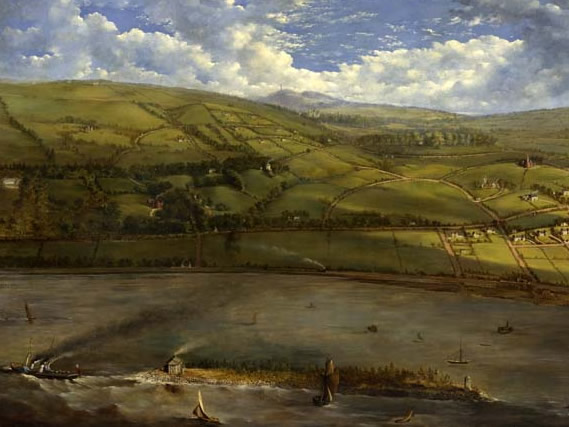
The new Herdman Channel was completed in 1930 – creating the distinctive ‘trident’ of waterways you can see from the air.
Eight years later the first planes took off from the new Harbour Airport – built on 365 acres of reclaimed land on the Sydenham foreshore.
The advent of World War II saw Belfast Harbour badly damaged by German bombers on April 15, 1941.
It quickly recovered, however, and in 1950 the legacy of transformation continued, as the UK’s first roll on-roll off ferry service began from Pollock Basin.
In 1957, work began to further widen and deepen the Victoria Channel and Musgrave Channel turning circle. The following decade the massive Belfast Dock and Harland &Wolff ‘Building Dock’ – featuring the first of the City’s two distinctive yellow cranes – were opened.
A MODERN PORT AND ESTATE
The millennial year, 2000, saw Victoria Terminal 1 opened on reclaimed land north of Richardson Wharf, followed by 2, 3 and finally 4 in 2007, with 1 and 3 used for container services and 2 and 4 for passenger services.
Also that year, the £120m Odyssey Arena and Pavillion – Northern Ireland’s largest-ever engineering project, and a multi-purpose indoor venue hosting concerts, shows, sports events, exhibitions and concerts – opened its doors. Now known as the SSE Arena, it remains the largest indoor venue in Ireland.
Three Years later, the Holywood Exchange retail development opened, followed, two years later by Titanic Studios, one of the largest film studios in Europe.
Other major developments, including the Public Record Officer and the Belfast Metropolitan College Campus followed before Titanic Belfast – the £97m centrepiece of Titanic Quarter and one of the world’s greatest tourist attractions – opened its doors in 2012.
The following year, the largest construction project ever undertaken at Belfast Harbour – the £50m, D1 Offshore Wind Terminal – was completed in record time.
And now, as we move through the third decade of the new century, work continues apace on City Quays, an ambitious eight-hectare £275m property and waterfront regeneration development in the Clarendon Dock area.
The Commissioners and Board’s principal aim is “to leave behind something better than they inherited” and, with extensive property sites of 1,950 acres of port operations development projects and nature conservation, they have certainly achieved that.
Covering an area of 2,000 acres, representing 20% of Belfast City area, the Harbour Estate is now home to high-quality commercial real estate, and a diverse community of businesses in sectors such as financial and IT services, R&D, film production, engineering, and aerospace manufacturing, employing more than 27,000 people. And the development of commercial property and residential real estate in recent years has seen the waterfront area of the city transformed since the days when Sailortown was Belfast’s first waterfront ‘village’ and vessels berthed on Donegall Quay.
The Harbour Estate itself has been ‘home’ to people since its first residential development, The Arc at Titanic Quarter, opened in 2009, comprising nearly 500 apartments and a number of retail units.
Shorter-term visitors can also avail of award-winning accommodation including The Titanic Hotel and the AC Marriott, which is part of the City Quays development.
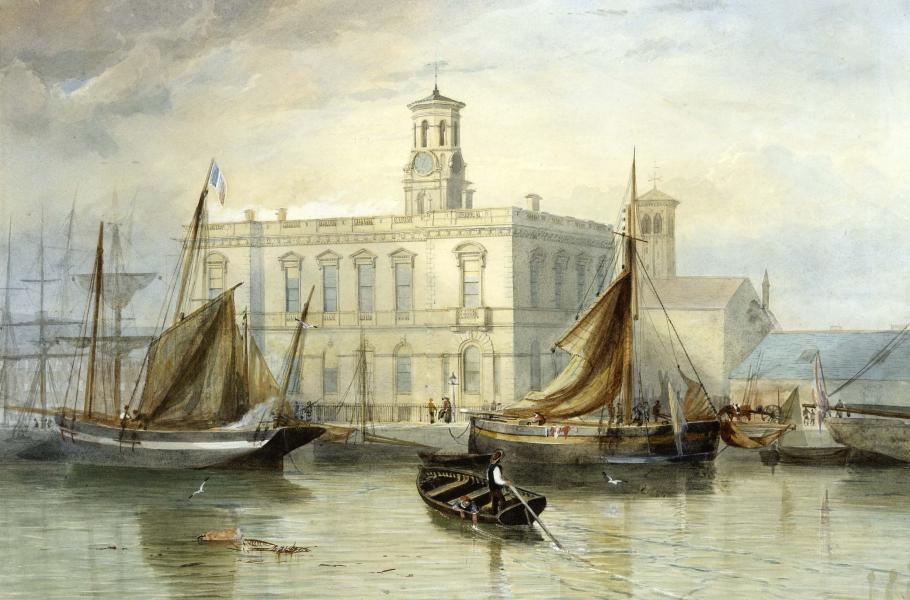
Clarendon Dock and Harbour Office, Belfast, 1859
History of the Harbour Office
Since 1847, the Harbour Office has been the headquarters of the Belfast Harbour Commissioners.
Initially designed by Harbour engineer George Smith and built-in sections, it held its first Commissioners meeting in 1854.
An additional, Italian palazzo-inspired extension – the work of renowned Belfast architect William Henry Lynn – was completed in 1895 and visitors never fail to be impressed by the striking marble interior and stunningly beautiful, ornate rooms.
The Barnett Room, with its curved ceilings, stained glass windows and artwork, depicts the City’s legendary maritime past, while the Heritage Room, which is open to the public, contains exhibits and old uniforms which relay the history of the Harbour Commissioners down through the centuries.
Current Use
Belfast Harbour, a socially responsible port, has always been committed to investing in the local community. Hence, the Harbour Office often welcomes requests from charities, associations, educational bodies and others who wish to make use of its facilities for special, community focussed functions.
Day to day, the building is used as office accommodation for Belfast Harbour employees and the rooms on the upper floor are used for business meetings, including the Commissioners’ board meetings.
Built up since the mid-nineteenth century by numerous Harbour Commissioners, the walls of the Harbour Office are adorned with an incredible fine art collection, which includes seventeenth- and eighteenth-century portraits, nineteenth-century Irish paintings and an assortment of paintings by twentieth-century Northern Irish artists such as Joseph W Carey, William Conor, Frank McKelvey and Maurice Wilks, as well as nineteenth century French and Italian sculptures and bronzes.
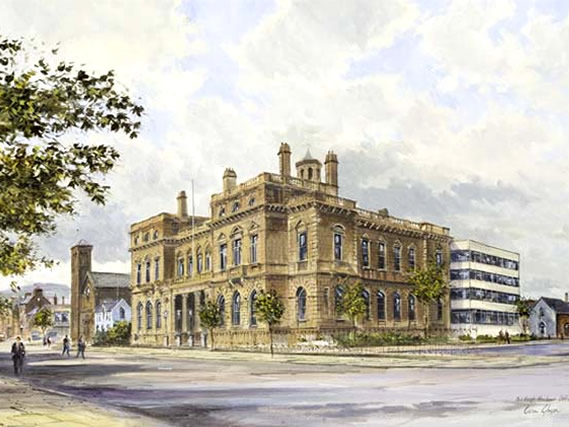
Belfast Harbour
Titanic Port
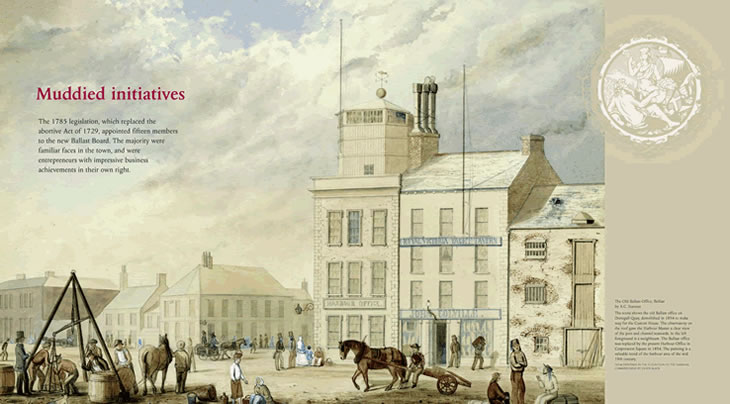
About The Book
RMS Titanic, one of the most famous vessels in maritime history, was built by Harland and Wolff Ltd at the beginning of the turbulent 20th century, when the Belfast shipyard was one of the greatest in the world. Provision for shipbuilding, as well as trade and commerce, had been provided throughout many decades by the Belfast Harbour Commissioners. Without the investment made by the Harbour, it’s unlikely that the Titanic would have even been built in Belfast. The history of Belfast Harbour from 1613 is an adventure story about visionaries and tough-minded merchants, business barons, entrepreneurs, as well as skilled craftsmen and the hard labour of generations of workers of all kinds.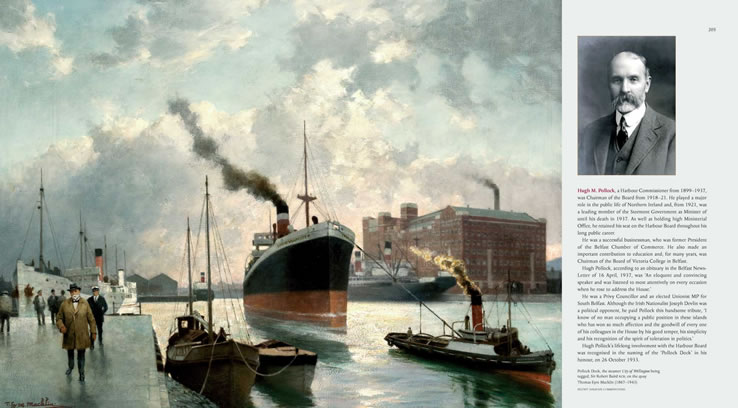
It is a story of great vessels and tremendous achievements, of engineering brilliance and also of steadfast courage in keeping open the Harbour throughout two World Wars, and the resourcefulness of its people during the recurring upheavals of local history and politics.
In recent years a new vibrancy has led to the development of the Titanic Quarter and the exciting £97m Titanic visitor attraction – Titanic Belfast, as Belfast Harbour and the city itself pay tribute to the technological talent that made the Titanic an engineering world-beater in its day.
The story is told in detail for the first time by award-winning journalist and author, Alf McCreary, who has been given exclusive access to the voluminous historical archives of the Belfast Harbour Commissioners. This book contains many hitherto unpublished facts as well as the unique art collection and rare photographs and paintings in the Harbour Office.
About The Author
Alf McCreary is an award winning journalist and author who writes extensively on Irish affairs. He is an honours graduate in Modern History from the Queen’s University of Belfast, and for more than two decades he was a reporter, columnist and senior feature writer on the Belfast Telegraph, where he is currently the Religion Correspondent.
More Information & Where To Buy
Titanic Port is priced £25.00 and available to buy in most good book shops.
